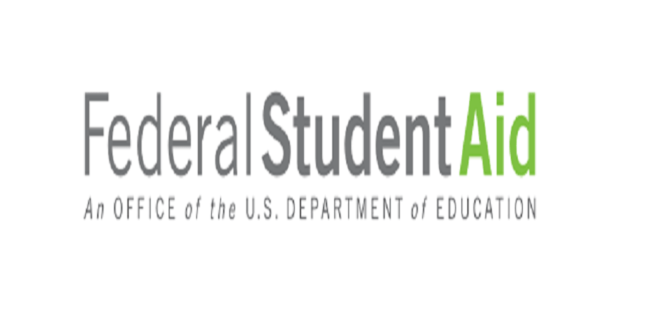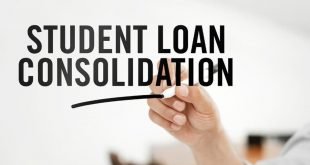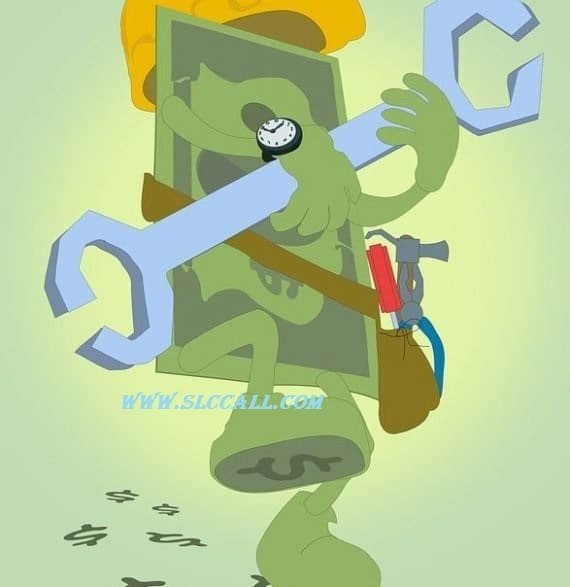A Direct Consolidation Loan allows you to consolidate (combine) multiple federal education loans into one loan. The result is a single monthly payment instead of multiple payments. Loan consolidation can also give you access to additional loan repayment plans and forgiveness programs.
There is no application fee to consolidate your federal education loans into a Direct Consolidation Loan.
You may be contacted by private companies that offer to help you apply for a Direct Consolidation Loan, for a fee. These companies have no affiliation with the U.S. Department of Education (ED) or ED’s consolidation loan servicers. There’s no need to pay anyone for assistance in getting a Direct Consolidation Loan. The application process is easy and free.
Should I consolidate my federal education loans?
The answer depends on your individual circumstances.
Pros
- If you currently have federal education loans that are with different loan servicers, consolidation can greatly simplify loan repayment by giving you a single loan with just one monthly bill.
- Consolidation can lower your monthly payment by giving you a longer period of time (up to 30 years) to repay your loans.
- If you consolidate loans other than Direct Loans, consolidation may give you access to additional income-driven repayment plan options and Public Service Loan Forgiveness (PSLF). (Direct Loans are from the William D. Ford Federal Direct Loan Program.)
- You’ll be able to switch any variable-rate loans you have to a fixed interest rate.
Cons
- Because consolidation usually increases the period of time you have to repay your loans, you will likely make more payments and pay more in interest than would be the case if you didn’t consolidate.
- When you consolidate your loans, any outstanding interest on the loans that you consolidate becomes part of the original principal balance on your consolidation loan, which means that interest may accrue on a higher principal balance than might have been the case if you had not consolidated.
- Consolidation may also cause you to lose certain borrower benefits—such as interest rate discounts, principal rebates, or some loan cancellation benefits—that are associated with your current loans.
- If you’re paying your current loans under an income-driven repayment plan, or if you’ve made qualifying payments toward Public Service Loan Forgiveness, consolidating your current loans will cause you to lose credit for any payments made toward income-driven repayment plan forgiveness or PSLF.
If consolidation would cause you to lose the benefits associated with some of your current loans and you are working toward earning those benefits, you should not include those loans in your new Direct Consolidation Loan. When you apply for a Direct Consolidation Loan, you don’t have to consolidate all of your eligible loans.
For example, if you have both Direct Loans and other types of federal education loans, and you have been making payments toward PSLF on your Direct Loans, you should not consolidate your Direct Loans along with your other loans. Similarly, if you have Federal Perkins Loans and you are employed in an occupation that would qualify you for Perkins Loan cancellation benefits, you should not include your Perkins Loans when you consolidate. Leaving out your Direct Loans or Perkins Loans will preserve the benefits on those loans.
If you want to lower your monthly payment amount but are concerned about the impact of loan consolidation, you might want to consider deferment or forbearance as options for short-term payment relief or consider switching to an income-driven repayment plan for longer-term payment relief.
Once your loans are combined into a Direct Consolidation Loan, they cannot be removed. The loans that were consolidated are paid off and no longer exist.
Should I refinance to consolidate my federal education loans into a private loan?
As a federal student loan borrower, you have certain rights that are not typically available with private loans. While refinancing your federal student loans into a private student loan can sometimes lower your interest rate, your private student loan will not necessarily have the same terms and conditions as your federal student loan.
You should carefully review the terms of a private student loan before you give up the benefits available on federal student loans. The following are some examples of benefits that you may lose if you refinance your federal student loan into a private student loan:
- Access to temporary loan payment relief through approved periods (deferment or forbearance) when you do not have to make payments because of financial hardship, continuing your education, or military service
- No interest accumulation on subsidized student loans during periods when payments are deferred
- Access to repayment plans based on your income that provide loan forgiveness once you have been in repayment for 20 or 25 years
- Access to various forms of loan forgiveness and discharge, such as Public Service Loan Forgiveness, teacher loan forgiveness, total and permanent disability discharge, and borrower defense to repayment discharge
What types of loans can be consolidated?
Most federal student loans, including the following, are eligible for consolidation:
- Subsidized Federal Stafford Loans
- Unsubsidized and Nonsubsidized Federal Stafford Loans
- PLUS loans from the Federal Family Education Loan (FFEL) Program
- Supplemental Loans for Students
- Federal Perkins Loans
- Nursing Student Loans
- Nurse Faculty Loans
- Health Education Assistance Loans
- Health Professions Student Loans
- Loans for Disadvantaged Students
- Direct Subsidized Loans
- Direct Unsubsidized Loans
- Direct PLUS Loans
- FFEL Consolidation Loans and Direct Consolidation Loans (only under certain conditions)
- Federal Insured Student Loans
- Guaranteed Student Loans
- National Direct Student Loans
- National Defense Student Loans
- Parent Loans for Undergraduate Students
- Auxiliary Loans to Assist Students
Private education loans are not eligible for consolidation, but for some Direct Consolidation Loan repayment plans, the total amount of your education loan debt—including any private education loans—determines how long you have to repay your Direct Consolidation Loan.
When can I consolidate my federal education loans?
Generally, you are eligible to consolidate after you graduate, leave school, or drop below half-time enrollment.
What are the requirements to consolidate a loan?
Here are some of the eligibility requirements for receiving a Direct Consolidation Loan:
- The loans you consolidate must be in repayment or in the grace period.
- Generally, you cannot consolidate an existing consolidation loan unless you include an additional eligible loan in the consolidation.
- Under certain circumstances, you may reconsolidate an existing FFEL Consolidation Loan without including any additional loans.*
- If you want to consolidate a defaulted loan, you must either make satisfactory repayment arrangements (defined as three consecutive monthly payments) on the loan before you consolidate, or you must agree to repay your new Direct Consolidation Loan under the
- Income-Based Repayment Plan,
- Pay As You Earn Repayment Plan,
- Revised Pay As You Earn Repayment Plan, or
- Income-Contingent Repayment Plan.
- If you want to consolidate a defaulted loan that is being collected through garnishment of your wages, or that is being collected in accordance with a court order after a judgment was obtained against you, you cannot consolidate the loan unless the wage garnishment order has been lifted or the judgment has been vacated.
*You may be able to reconsolidate an existing
- delinquent or defaulted FFEL Consolidation Loan and repay your new Direct Consolidation Loan under an income-driven repayment plan;
- FFEL Consolidation Loan in order to qualify for the PSLF Program; or
- FFEL Consolidation Loan to use the no accrual of interest benefit for active duty service members, which states that you’re not required to pay the interest that accrues during periods of qualifying active duty military service (for up to 60 months) on the portion of a Direct Consolidation Loan that repaid a Direct Loan Program or FFEL Program loan first disbursed on or after Oct. 1, 2008.
What is the interest rate on a consolidation loan?
A Direct Consolidation Loan has a fixed interest rate for the life of the loan. The fixed rate is the weighted average of the interest rates on the loans being consolidated, rounded up to the nearest one-eighth of one percent. There is no cap on the interest rate of a Direct Consolidation Loan.
When do I begin repayment?
Repayment of a Direct Consolidation Loan will begin within 60 days after the loan is disbursed (paid out). Your loan servicer will let you know when the first payment is due.
If any of the loans you want to consolidate are still in the grace period, you have the option of indicating on your Direct Consolidation Loan application that you want the servicer that is processing your application to delay the consolidation of your loans until closer to the grace period end date. If you select this option, you won’t have to begin making payments on your new Direct Consolidation Loan until closer to the end of the grace period on your current loans.
Are there different repayment plans?
Borrowers have different needs, so there are several repayment plans—including income-driven repayment plans, which base your monthly payment amount on your income and family size. You’ll select a repayment plan when you apply for a Direct Consolidation Loan. Learn about repayment plans.
How do I apply for a Direct Consolidation Loan?
Apply for a Direct Consolidation Loan. You can complete and submit the application online, or you can download and print a paper application for submission by U.S. mail.
After you submit your application electronically or by mailing a paper application, the consolidation servicer you selected will complete the actions required to consolidate your eligible loans. The consolidation servicer will be your point of contact for any questions you may have related to your consolidation application.
Unless the loans you want to consolidate are in a deferment, forbearance, or grace period, it’s important for you to continue making payments on those loans until your consolidation servicer tells you that they have been paid off by your new Direct Consolidation Loan.
Whom do I contact if I have questions about consolidation?
This depends on where you are in the consolidation process.
To ask questions about consolidating your loans before you apply for a Direct Consolidation Loan, contact the Student Loan Support Center at 1-800-557-7394.
If you submitted your application online, your consolidation servicer’s contact information was provided at the end of the online process. If you submitted a paper application by U.S. mail, your consolidation servicer’s contact information was available when you downloaded or printed the paper application.
Published: studentaid.gov
 Student loan Forgiveness Call us immediately
Student loan Forgiveness Call us immediately



